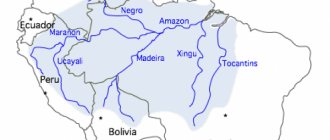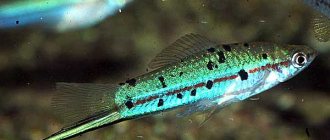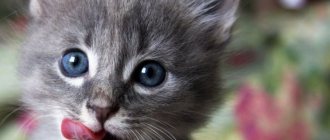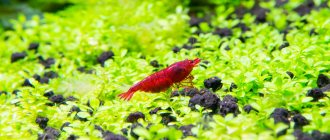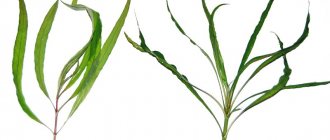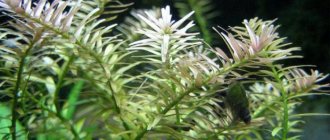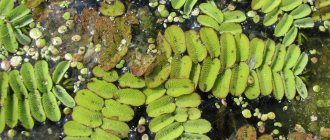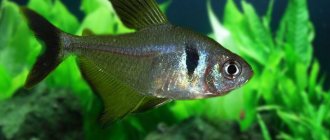Care of offspring
Usually, two hundred to three hundred eggs are obtained, which sink to the bottom, sticking to the foliage.
The caviar is not touched - it is sensitive. The fry will begin to hatch after a day or two. They will stick to nearby plants or the glass of the container. They begin to swim after 4-5 days. When the fry start swimming, you can start feeding them. For this purpose, ciliates, cyclops nauplii, rotifers, and small nematodes are used. Every two weeks the water in the container is changed, gradually increasing the hardness. Further, caring for the fry is no different from caring for adults.
During spawning, 200-300 eggs are obtained, of which fry appear after 1-2 days
Caring for and breeding minors is quite simple. You just need to remember about the individual characteristics of this type of fish and maintaining the cleanliness of the water in the aquarium. If you approach the matter responsibly, then these small creatures will delight their owner with their bright appearance, activity and fertility.
Description and aquarium species
Despite the fact that newts are common in many parts of the planet, it is quite difficult to see them in the natural environment, since they are nocturnal. These animals can have different colors depending on the species. Their body length ranges from 7 to 30 cm, with half of the total length coming from the tail. There are membranes between the toes on the paws, allowing the newt to move easily in the water.
During spawning, females change color, becoming brighter. Males of some species develop a striking dorsal crest running from head to tail.
These amphibians have a keen sense of smell, but their vision is rather weak - they only see moving objects. Their body temperature is 10-15 °C. Sexual maturity is reached at 3 years of age. Life expectancy at home with proper care is up to 20 years.
The body length of newts ranges from 7 to 30 cm, with half of the total length coming from the tail.
The aquariums contain more than 10 species of animals. The most common of them are:
- ordinary;
- comb;
- spiny (ribbed);
- red-bellied.
The common species, as a rule, grows to 9-11 cm. It is distinguished by its beautiful color: the back is brown-green with yellow spots, the belly is yellow, and there are dark longitudinal lines on the head. The skin is smooth. Males have a dorsal crest.
The crested varieties of the amphibian have a dark brown or black back and an orange belly. The color of males is brighter than that of females. They grow up to 18 cm in length. During spawning, males have 2 ridges - on the back and tail
This species should be kept at home with extreme caution, since crested newts can secrete a toxic substance through their skin glands for self-defense.
During spawning, female newts change color, becoming brighter
Spiny or ribbed received this name because of the tips of the ribs sticking out on the sides of the abdomen. While the amphibian is calm, these ribs are hidden in skin tubercles, but as soon as it becomes agitated, a protective mechanism is triggered and the ribs turn into real needles. This species reaches a length of 30 cm. The back of the animal is dark green with dark spots, and the belly is light yellow.
Newt home
The length of the body of an ordinary newt does not exceed eleven centimeters, and this is together with the tail, which makes up half of the entire length. The back is brownish-brown in color, and the belly can be yellowish with small spots. On the head of the newt you can see longitudinally located stripes of dark color. Usually the female and the male differ little from each other, but the mating season is an exception. Males become larger, they have a dorsal crest, females acquire a more intense color.
Crested newt
has a darker brown-black or black color. These newts are somewhat larger - up to eighteen centimeters. At the base of the tail there is a depression on the ridge. The spots on the animal's abdomen can be of various orange shades
The glands of crested newts can secrete toxic substances, so they should be handled with care.
In the spiny newt
The sharp tips of the ribs are hidden in the tubercles located on the sides of the body. In stressful situations, the newt releases them. You can feel this if you carelessly pick up the amphibian in your hands. The spiny newt can reach thirty centimeters in length. The body has a spotted green color, turning to yellow shades on the abdomen.
Aquarium newts
interesting objects to observe. The movements of these amphibians are unhurried. They can remain motionless for a long time, finding some kind of support or hovering at the surface of the water. The unpretentiousness of these amphibians does not cause much trouble for owners. Usually, additional heating of the water in the aquarium is not required; temperature fluctuations can range from fifteen to twenty-seven degrees. But it is better that the water temperature is eighteen to twenty degrees.
Can newts be kept with other animals?
For all types of newts, a species-specific aquaterrarium, that is, containing individuals of only one species, is preferable. Moreover, for some aggressive species, for example, Asia Minor or Pachytriton, the number of animals in one container should be limited, and shelter should be provided for each.
Sometimes it is possible to keep together peaceful, similar in size, related species of newts, for example, dwarf and blue-tailed ones, but in this case you need to carefully monitor so that the animals do not offend each other.
Keeping amphibians with fish is undesirable for several reasons:
- fish, as a rule, require different conditions of detention - higher temperatures and a larger volume of water;
- large predatory fish can harm the newts, and the newts themselves will try to eat small ones;
- the skin glands of some amphibians secrete poisonous mucus;
- in the presence of nimble fish in the aquarium, the slow newts will not get food, unless you feed each of them personally with tweezers;
- fish and newts have many common diseases, while treatment regimens for amphibians are much less developed, so it may turn out that newts die from a disease that fish can easily tolerate.
Therefore, keeping newts with other aquarium animals is not recommended. If you really want to add color and movement to a calm newt, as an exception to small warm-water newts (dwarf or young Spanish) you can place:
- not too small unpretentious fish such as guppies or platies;
- small, calm catfish, for example, corydoras;
- cherry shrimp (but you need to keep in mind that their young will certainly go to the newts for lunch);
- Hymenochirus frogs;
- large beautiful snails, for example, my snail is very decorated with blue and blueberry ampularia.
However, the aquaterrarium with newts does not need special decoration. These amphibians themselves are very attractive and interesting, and some difficulties in their maintenance should only add excitement to the owner.
How long do they live?
When comfortable conditions are created, newts can live up to 20 years, but, as practice shows, their average life expectancy in natural conditions rarely exceeds 7-10 years. This is not surprising, because human activity has led to the fact that most water bodies are polluted, causing a significant reduction in the population. In addition, in their natural environment, newts have many enemies, which also affect the quality of life of these small amphibians. All this led to the fact that many varieties were even listed in the Red Book.
That is why when buying a new pet, be sure to keep it separate from the other inhabitants of the aquarium. The quarantine period must be at least 2 weeks.
Most often, newt diseases are associated with disorders of the digestive system. Thus, at the slightest stress they develop anorexia, and when they ingest soil fractions, pets suffer from intestinal obstruction. In addition, these animals quite often encounter parasites, and the presence of the latter often causes pneumonia in newts, which in most cases ends in death.
Like many other aquarium inhabitants, amphibians often encounter fungal infections that affect not only the outer coverings, but also vital internal tissues and organs.
One of the most common newt diseases is septicemia, better known as “red leg.” This is an infectious pathology that is caused by toxins entering the blood. This disease is quite difficult for animals to bear and most often leads to the death of the pet. Another problem is dropsy, which is associated with the accumulation of fluid in all tissues of the animal. A similar problem often occurs if the amphibian does not feed properly.
If your health worsens
Newts should only be kept in water at a comfortable temperature for them. If the liquid is too warm, the well-being of individuals worsens. Normal is 15-20 degrees, no more. When adding a new individual to the aquarium, it must be kept in quarantine.
We recommend reading
Axolotl: keeping a water dragon in an aquarium
Often amphibians experience digestive problems - these are intestinal problems. The reason for this is helminths, which provoke pneumonia. Piperazine (50 mg/kg) will help against worms. It must be diluted with water and administered orally from a syringe.
If an animal swallows too large a piece of food or decor, this will lead to gastric obstruction. Stressful situations cause anorexia (nervous disorder) in newts.
There are also diseases caused by fungus. Initially, symptoms appear on the external surfaces, and then affect the internal organs. These are saprolegniosis and mucorosis.
Infectious diseases are when microbes that enter the blood can cause sepsis (“red leg”). This disease can be treated with chloramphenicol tablets. A tiny piece of 1x1 mm is needed. It is placed in food that the newt can easily swallow. You need to feed for 5 days or more until the condition improves.
Improper diet and living conditions provoke an infectious disease - dropsy. To avoid this, optimal nutrition is selected.
Reproduction
Almost immediately after waking up, newts begin to reproduce. The appearance of newts changes during the mating season - the color of females becomes brighter; in males, a transparent wavy or less commonly jagged crest develops on the back from the back of the head to the end of the tail, rich in capillary vessels and serving as an additional respiratory organ. The membranes on the paws perform the same function. A blue stripe runs along the bottom of the ridge.
The male attracts the female’s attention with a peculiar ritual - he makes characteristic wave-like movements with his tail. Having interested the female, he releases a spermatophore, which she picks up in the cloaca
Fertilization occurs inside the female's body.
A few days later, the females begin to lay eggs on their own, about 10 eggs per day, in total during the breeding period several hundred eggs (according to various sources, from 60 to 700). The size of the eggs is from 2 to 3 mm, oval in shape. Each egg is separately attached to the leaves of underwater plants.
After about two to three weeks (depending on the water temperature), larvae appear, only half a centimeter in size. The larvae feed on mosquitoes and small crustaceans. Unlike the adult form of the newt, respiration in the larva occurs using external gills. Typically, the larvae go through the metamorphosis stage by the end of summer, but there are cases where the larvae remained in reservoirs until the following spring, as well as cases of neotenic development of the larvae.
Sexual maturity in the common newt occurs at the age of 3 years. Newts spend the winter hibernating, hiding in fallen leaves, burrows, and basements.
Features of reproduction
Newts can reproduce after 3 years of age, when full puberty occurs. If you decide to place a male with a female, then you need to wait for the autumn period; winter and spring are also suitable.
For everything to go well, it is necessary to ensure the water temperature at 18 degrees during the spawning period. After fertilization has occurred, the female lays eggs on the back of the algae leaves. After 15 days, larvae will appear from the eggs, which are prone to independent existence.
Newts can eat hatched larvae, so it is better to place them in different aquariums. For larvae, a comfortable living temperature is considered to be 23 degrees.
Reproduction and hibernation
“Domestic dragons” begin to prepare for hibernation in late October early November. They need to be gradually prepared for this natural process. About a month before the intended process you need to:
- Gradually lower the water temperature and reduce lighting by the hour.
- Prepare a tray by putting damp sphagnum moss there and keep the newts at a temperature of 15 degrees for 3 days in this container.
- Then place the domestic amphibians in a dark, cool place for 2 months. The temperature there should be no higher than 8 degrees, with regular air ventilation. You can store them in the refrigerator, on the vegetable rack.
Chinese newts hibernate during the winter, which needs to be taken care of in advance. Newts are brought out of hibernation in the reverse order.
It is necessary to gradually increase the temperature and gradually the red-bellied ones will wake up. The reproductive instinct of amphibians appears when the water temperature rises to 25 degrees. Nutrition should be enhanced, satisfying, balanced. At this time, mating games begin among individuals. The female newt carries fertilized eggs for about three days. Egg laying occurs mainly at night. To prevent the newt parents from eating their future offspring, the adults need to be transplanted. You can take care of the “maternity hospital” for the babies and the caviar dishes in advance. The water in such an aquarium should be well saturated with oxygen. For a whole month, “baby dragons” will develop in the eggs. On the first day after hatching, they do not need food. The kids will have enough to eat the simplest ciliates that are present in the aquarium. In three months, the Chinese newt will begin to climb out onto dry islands in the aquaterrarium.
Diseases
Newt diseases are mainly associated with improper diet and maintenance of amphibians. Also, amphibians often develop a disease such as pneumonia, which is a consequence of the penetration of parasites into the pet.
In addition to injuries and damage, common ailments include:
- Fungal diseases that affect the skin of pets.
- Sepsis is thought to be caused by microbes that enter the blood of amphibians.
- Dropsy is an accumulation of fluid in tissues.
If you discover that your pet is feeling unwell or has external abnormalities, you should seek advice from a specialist who will make a diagnosis and prescribe treatment. Aquarium newts are rare pets that will decorate and enliven any tank. Despite their natural modesty and timidity, many species of amphibians willingly make contact with the owner, and maintaining and caring for these representatives of amphibians will not require much effort and time of the owner.
Spreading
The range of the Spanish newt is limited to the western part of the Iberian Peninsula. The species is found throughout Portugal and western Spain. In Spain, this species is found in the following regions: Galicia, Asturias, Salamanca, Toledo, Andalusia. The eastern border of the range runs along the level of the province of Cordoba in Andalusia.
We invite you to familiarize yourself with Decorative mouse care and maintenance
In Portugal, the range of the Spanish newt practically coincides with the range of the common or fire salamander, and in places where the common salamander is not found, there are also no populations of the Spanish newt. The Spanish newt is found at an altitude of 100 to 800 meters above sea level; at an altitude of 1200 meters it is extremely rare.
Reproduction of newts in an aquarium
Reproduction of newts does not cause great difficulties. By nature they are very fertile. Their breeding season is in the spring. Coming out of winter, the male gradually becomes brighter, which signals his readiness to mate. At this time, you can transplant the female to him. The water temperature must be lowered to +18ºС and below. Animals reproduce by internal fertilization.
A pregnant female must be placed in a separate terrarium, where there are many plants. She will spawn into their leaves, tucking in the ends along the way. The larvae hatch in 20-30 days. At first they will hide in the dense greenery. After 3 months they will look like normal adults.
Breeding rules
As a rule, newt reproduction occurs without difficulty. The spawning period most often occurs in spring. During this period, you need to lower the water temperature to +6-18 °C. The pregnant female should be transplanted into a separate aquarium, where she will lay eggs in groups on algae leaves.
The larvae will hatch in 20-30 days. The aquarium where they are located should have many living plants that create shade. The water temperature should be maintained at +18 °C. After about 3 months, the cubs will begin to look like adults.
Keeping aquarium newts, although it has its own nuances, does not require much effort. In addition, such amphibians will be an excellent alternative to traditional pets for people with allergies to wool.
What do newts eat at home?
An amphibian should not be allowed to starve, lest it begin to attack its neighbors. Such animals can also eat their old shed skin. There are several important points regarding what to feed the aquarium newt:
It is recommended to use live bloodworms, flies, earthworms, mealworms, snails and crickets as the basis for the amphibian’s diet.
It is important to note that you should not constantly feed your newt live bloodworms. Worms can be harvested in the summer and frozen, and before serving, keep them in salt water to disinfect them. As a treat for the Spanish newt, you can enjoy raw liver, seafood, fish and bird giblets
These foods should be changed and then thrown into the aquarium. If the amphibian is just adapting, then it is better to feed it with tweezers. Under no circumstances should you give your pet meat with lard or poultry skin, even in small quantities, since even a minimal amount of fat can cause serious harm to health. For amphibians, it is important to use vitamin and mineral supplements that dissolve in water. There are special solutions and pressed briquettes of powder of various shapes that dissolve in water for a long time and saturate it with useful substances.
How often should you feed your newt?
Until the animal reaches two years of age, it is necessary to feed it daily. Interestingly, the amount of food does not need to be limited, since there is no risk of overfeeding the amphibian. It is allowed to offer food until the pet refuses it. If you are wondering how many times to feed a newt, then adults should be given treats 2-3 times a week. The best solution is that when feeding, it is recommended to move the animal to a separate terrarium or basin so as not to pollute its home.
Content
Before you decide to get an exotic pet, you should carefully study the features of keeping amphibians, how to feed newts and how these amazing creatures reproduce in order to get offspring in the future.
For content you will need:
- A spacious aquarium with a floating raft or a terrarium with an island with dry land. The volume of the tank is determined depending on the size of the pets; for two medium-sized animals, a container with a capacity of 50-60 liters is suitable.
- Pebbles or fine gravel are chosen as the soil. It is important that the substrate does not have sharp edges, otherwise pets will injure the delicate skin. Living plants must be planted in the terrarium, both in water and on land, to create a natural habitat for amphibians.
- In addition to living flora, there are shelters on land and in water: pieces of bark, coconut shells. The house is equipped with a lid, since these amphibians are extremely inquisitive and love to run free.
- The most important condition for successfully keeping amphibians is the need to constantly maintain the desired temperature - within 18-22C. To maintain the desired temperature, special cooling systems are used, or “homemade” methods are used: bottles with ice, fans and coolers.
Having bought an exotic pet, many owners think about how long newts live. In natural habitats, the lifespan is short - a maximum of 10 years, but in a home aquarium amphibians can live up to 30 years.
Where to keep a newt in the house: remodeling the aquarium
One newt needs approximately 15 liters of water for normal life, and if you take into account that the newt also wants a dry “shore” for rest, then you need to buy an aquarium with a minimum volume of 30 liters
It is also necessary to take into account the fact that after the appearance of one “resident”, you often want to add a company to it, so it is better to immediately purchase an aquarium of a larger size than is currently needed
The bottom of the aquaterrarium must be covered with coarse soil, since small soil can be swallowed by newts; stones should be rounded and have smooth edges. Live algae in an aquarium are important not only for beauty, because many newts are accustomed to hiding eggs in the leaves of plants, but some aquarists decorate the newts’ home with artificial algae.
Living plants require mandatory insolation. It is best to install a fluorescent lamp that will not overheat the water. You can also use an ultraviolet lamp in an aquaterrarium. It not only gives light and creates the necessary ultraviolet radiation for 12 hours, but also does not overheat the water.
The maximum water temperature that newts can tolerate is 22°. If the temperature rises higher, this can seriously harm the amphibian. In extreme heat, experts advise additional cooling of the water, for example, you can lower a container with ice into the aquaterrarium.
The picture below shows the types of newts (male and female). Some of them can be kept at home. After reading further, you will find out whether it is possible to keep several newts in one aquarium.
We defend the water and properly care for it
When arranging an aquaterrarium, you need to use only water that has settled for at least two days. There is no need to use liquid from a pet store. If a filter is not used, then a quarter of the water is changed weekly. When using filtration, the device operates around the clock.
We recommend reading
Axolotl: keeping a water dragon in an aquarium
The ratio of water to land should be 3: 1. Newts in the aquarium go completely to land and are placed there at full height.
It is not advisable to bring a newt found in the wild into your home. Some species are protected by the state, so you can get a fine. Pets bred in captivity are best suited for living at home.
After picking up a newt, you must wash them, because pets secrete a special protective secretion. You also need to handle amphibians with clean hands. There should be no residues of cleaning products on them. They easily penetrate the porous skin of amphibians and can harm them.
Diseases of the Spanish newt in the aquarium
Newts, like fish, unfortunately, sometimes get sick. They can be affected by both fungal (most often saprolegniosis and mucorosis), and parasitic and infectious diseases. A common and dangerous infectious disease of newts is the so-called “red leg”, in fact, it is sepsis, and it is called red leg because one of the symptoms is hemorrhages under the skin of the abdomen and upper parts of the legs, from which they acquire a color from pink to bright red color. Other symptoms may also include wounds on the skin; if the newt gets out of the water and dries out a little, then around the wounds you can see a black border, lethargy, even complete apathy, and refusal to eat.
The disease requires immediate treatment: if a sick newt lives with relatives, it must be isolated in a quarantine container, since the disease is contagious. Next, it is best to find a veterinary laboratory where they can do tests to understand which pathogen is responsible for the occurrence of sepsis in a particular case, so as not to poison the newt with an antibiotic to which the microbes may be insensitive. If it is not possible to perform an analysis, then there is no other way - the antibiotic will have to be selected empirically (experimentally): almost all antibiotics from the human first aid kit can be used in treatment, but most often tetracycline is used, at a dose of 50 mg/kg of animal weight through the mouth with food, aminoglycosides (amikacin, gentamicin) 20 mg/kg body weight or metronidazole (Trichopol) at a dose of 50-100 mg/kg for 5-7 days. There are also more complex methods - introducing a solution of chloraphenicol into the stomach of an amphibian through a probe. The dosage is as follows: the first administration of 8 mg of the drug in 2 ml of water, then for 6 days the administration of 4 mg of the drug in 1 ml of water, and then the prophylactic administration of a similar dose of chloraphenicol once a week for several weeks. It is possible to use medicinal baths, 15 ml of sulfadimidine solution per 10 liters of water. The duration of the bath is 1 hour, baths last for two weeks. In the event of an epidemic, complete disinfection and restart of the aquarium is necessary.
All of the above is just the fruit of observing this type of amphibian and collecting various information from owners and breeders. We would like to share with visitors not only information, but also live emotions that allow us to understand the world of aquariums more fully and subtly. Register at https://fanfishka.ru/forum/, participate in discussions on the forum, create profile topics where you will talk about your pets in the first person and from the horse’s mouth, describe their habits, behavior and content, and share with us your successes and joys, share your experiences and learn from the experiences of others. We are interested in every bit of your experience, every second of your joy, every awareness of a mistake, which makes it possible for your comrades to avoid the same mistake. The more of us there are, the more pure and transparent drops of goodness there are in the life and everyday life of our seven billion society.
Spanish newt video review
How to organize living spaces
Newts at home are best suited for living in an aquaterrarium, but quite a large number of owners change existing aquariums into comfortable housing for their pets. Since this type of amphibian requires small areas of land, aquariums should be equipped in such a way that pets can periodically go ashore. The best sushi islands are:
- twigs,
- pebbles,
- pieces of wood,
- other decor that is not placed in water.
In order for the home newt to feel comfortable in its new habitat, it is necessary to provide it with a water space of at least 15 liters, and if you take into account the dry territory, you need to purchase a 30-liter aquarium. One should also take into account the fact that such a volume is designed for only one inhabitant, but if in the future the owner’s plans include acquiring several more individuals, one should immediately acquire a dwelling of the required size.
A lid on the newt's home must be present, since the amphibian can at any time attempt to escape, as a result of which it may die.
At the bottom of the aquarium you need to place large round stones, the edges of which will be smooth. It is better not to use fine soil, since a domestic amphibian can accidentally absorb it along with food.
Newts hide their eggs in the leaves of aquatic vegetation, so the aquaterrarium should be equipped with live or artificial plants, which will become an additional decoration for the home of such a fascinating home inhabitant.
The maximum temperature value for the water space that the home newt can tolerate is 22°C. If the temperature reading is higher, the amphibian may suffer serious harm as a result. In very hot climates, experts recommend additional cooling of the water, for example, using a container of ice lowered into the aquaterrarium.
It is necessary to install a special filter in the home of the home newt, and also change about a fifth of the water space every week. These manipulations will protect amphibians from the occurrence of various diseases that may appear as a result of their vital activity, as well as from food residues that can be decomposed.
Diet of an amphibian pet
Let's consider what to feed the newt in the aquarium so that it lives a healthy and long life. Food that is as close as possible to what they eat in their natural environment is suitable. This is live food - bloodworms, tubifex, shrimp, earthworms, slugs or tadpoles. Amphibians are also given frozen food. These are pieces of fish, squid, liver, kidneys, and lean meat.
The food is cut into small pieces that amphibians can easily grab and swallow. Feeding is carried out once a day for young individuals. For older people, you can give food once every two days.
Newts have the ability to catch live food, so food must be served close to the nose. If they refuse food, the diet should be changed. When amphibians are kept at home with fish, food is shared. What newts eat is not always suitable for other inhabitants, and vice versa.
Features of triton content
Keeping newts at home is easy. You just need to immediately choose the right container, lighting, soil and other components of the terrarium. This will help the animal quickly get used to it.
It is necessary to give preference to a horizontal terrarium. Its volume for 1-2 individuals is not less than 20 liters. Reptiles need space. You need to remember this if you plan to add fish to them.
These aquatic lizards are sometimes kept in schools. Taking into account at the same time that when the mating season comes, males will begin to fight for females. They will fight, causing injury. It is best when there is 1 boy and 2-3 girls in a flock.
Temperature plays a major role in proper development and existence. This is a cold-blooded animal. His body temperature is only 15 C. Temperature fluctuations are destructive for him.
Requirements:
- The water in the aquarium should not exceed 18-22 C. Changes at night by two degrees are allowed.
- PH – in the range of 5.5-8.
- Soft or medium hard water, 5-15 dGH.
- The terrarium is large. It is necessary to organize shaded houses and islands in it, because reptiles require not only water, but also land.
When choosing plants, give preference to live ones rather than artificial ones. After all, the female will wrap her eggs in leaves. Additional illumination with fluorescent lamps is needed so that the aquarium does not heat up.
For cooling in the summer, you can buy a special unit or put chilled plastic bottles of water inside.
Newts are fairly small animals. Sand or small pebbles are not suitable for them. When feeding, a grain of sand can get inside the amphibian, causing intestinal obstruction and death of the pet.
There is no need for aeration, because animals are able to breathe not only through their skin, but also through their lungs when climbing onto land. They are pretty clean. Therefore, it is recommended to replace 15-20% of water once a week.
How to care for a newt
Caring for newts at home does not pose any difficulties. By observing a number of requirements, you can protect amphibians from diseases and other troubles.
- The minimum permissible volume of water is 15–20 liters per individual. When breeding a group of newts, it is worth considering that they love space.
- Newt must be kept at a temperature of 20–22 degrees. The habitat in which they will live should be created the same as in the wild. Since amphibians are cold-blooded animals, a drop in temperature has a painful effect on their condition.
- The acidity level of the water should not exceed 8 ph.
- Water hardness should be 10–12 dGH.
- The choice of lighting must be approached with caution, as heating of the water should be avoided. Fluorescent lamps are best suited.
- When choosing soil, you need to pay attention to its fractions. They should be slightly larger than the amphibian’s head, since an individual can swallow a pebble along with food.
- In summer, it is necessary to cool the water, as the air temperature rises noticeably. You can purchase a special device at a pet store. A budget option is to cool the tank using ice bottles.
- When setting up an aquarium, it is recommended to take care of the land areas that amphibians love so much.
- Water filtration is carried out every few days. Change about 20–30% of the water weekly.
- Keeping newt, as well as further reproduction, is recommended if there are live aquarium plants in the tank. The female lays her offspring on algae leaves. During development, eggs need shade, which artificial plants cannot create.
What do newts eat?
When keeping amphibians in a tank, every aquarist is faced with the problem of what newts eat.
It is necessary to give food every other day. Chopped earthworms, small fish or bloodworms are suitable for food. You can also use liver pulp or minced fish. For newts this will be the best option.
To maintain a healthy appearance of amphibians, it is necessary to add various trace elements and minerals to their food. At the pet store you need to purchase synthetic food for amphibians, enriched with calcium and other useful components. Individuals do not feed on plants, so there is no need to worry about their integrity.
Newly hatched babies should be fed daily as they actively eat and grow. When preparing meals, it is necessary to take into account the daily protein intake. During growth, small crustaceans or insects can be used as food. After the kids grow up a little, it is recommended to give tubifex and bloodworms.
It is better to feed the newt with tweezers than to feed the newt in water. Over time, uneaten remains settle to the bottom and contaminate the tank.
Newt eats shrimp
How long do newts live?
As practice shows, at home the individual lives much longer. This is due to the fact that in captivity animals have many enemies, since they are small in size. In the wild they can live up to 10 years. The average standard of living is 7 years.
In aquariums, newt fish can live for about 20 years. For a long life, pets must be properly cared for.
In wildlife, their numbers are constantly declining, as many water bodies are polluted due to human activity. Some of the species are listed in the Red Book.
Wintering
When keeping these amphibians, it is necessary to take into account that the newt animal is going through a wintering period. It is usually inactive at this time. This period begins at the end of October or the first half of November. The common newt looks for a wintering place and stays there for two weeks. The recommended temperature for this period is 15 degrees.
Reproduction and lifespan of the common newt
In captivity, newts live for about 28 years; in natural conditions, the duration depends on external factors, but, as a rule, no more than 15. Lizards reach sexual maturity at 2-3 years and already begin to participate in peculiar mating games. They last from March to June.
Having returned from wintering, a male common newt waits for a female in a pond. Seeing her, he swims up, sniffs and touches her muzzle. Having made sure that in front of him is an individual of the opposite sex, he begins to dance.
Moving back and forth, finding himself near the female, he stands on his front paws. After 10 seconds, he makes a jerk, bends his tail strongly and pushes a stream of water towards the female. Then he begins to hit himself on the sides with his tail and freezes, watching the reaction of his “friend.” If the female is delighted with the mating dance, then she leaves, allowing the male to follow her.
Males deposit spermatophores on underwater rocks, which the female captures with her cloaca. After internal fertilization, they begin to spawn. The number of eggs is large, about 700 pieces. Each of them, individually, is attached by the female to a leaf, while carefully wrapping it with the help of its hind legs. The entire process can take approximately 3 weeks.
After another three weeks, the larvae emerge. They are 6 ml long, with a well-developed tail. On the second day, the mouth appears and they begin to catch their own prey. In this case, they will be able to use their sense of smell only on the 9th day.
The photo shows a common newt larva
After 2-2.5 months, the grown newt can come to land. If the lizard has not had time to develop sufficiently by the beginning of the cold weather, then it remains in the water until next spring. After the breeding season, adult newts switch to a terrestrial lifestyle.
Recently, the population of the common newt has sharply decreased, and therefore it was listed in the Red Book. Lizards bring tangible benefits: they eat mosquitoes and their larvae, including malaria ones. They also have plenty of natural enemies. These are snakes, birds, fish and frogs that eat young fish as they grow up in water bodies.
Common newt (Lissotriton vulgaris)
Common newt photo
The common newt belongs to the genus of small newts and is listed in the Red Book of Russia. Sizes from 7 to 11 centimeters, body color from olive to brown, abdomen yellowish or light orange. Sex differences are weak most of the time, males are slightly larger than females. Distinctive features become visible during the mating season - males develop a crest. The conditions for keeping it in the aquarium are as follows:
— Aquarium volume for a newt : from 15 liters, it is better, of course, more, especially if you plan to keep the newt not alone, but in a group of relatives or in the vicinity of fish. It is necessary to equip one or more islands, since newts are amphibious animals that come to land from time to time.
An ideal option would be a special Tetra ReptoAquaSet .
Aquarium for newts
And the bottomless range of REPTI-ZOO products in the attached catalog will help you in arranging your aquarium; you will find everything you need for newts: soils, islands, plants, heating pads, lamps, etc. (the catalog is huge, it takes 2-5 seconds to load, we recommend downloading it to your computer).
— Water temperature for newt. Newts are cold-water creatures. The required water temperature for keeping them is 18 - 22 degrees Celsius. And if you want to bring the newt’s living conditions as close as possible to natural ones, then to organize the wintering period, the water in the aquarium will have to be cooled to 5-8 degrees. Therefore, think about cooling the water in the aquarium in advance.
- Acidity. The pH range of newts is very wide; they live in both acidic (5.5) and almost alkaline water (7.8), but it must be remembered that, as with keeping fish, the unacceptable range of values is more important, but the stability of the indicator. Sudden changes in pH are tolerated very poorly by any living creature.
— Water hardness for Triton . They prefer either soft or medium-hard water, dH range from 5 to 15.
— Lighting for newt . The issue of lighting for the newts themselves is not fundamental, but it is still required for the vegetation in the aquarium. When designing the lighting for the newts' future home, remember that the lamp must be positioned so that it does not heat the water!
Common newt photo
— Soil for newt. The issue of soil is extremely important. Remember: you need to choose a soil fraction such that individual particles cannot fit into the newt’s mouth. Otherwise, accidental consumption of soil is possible, which will most likely lead to intestinal obstruction and death of the pet.
— Plants for newt. It is preferable to use live plants, because this makes your aquarium more natural, both aesthetically and biologically, living plants play an important role in the functioning of the nitrogen cycle in the aquarium , and if you decide to breed newts, then you cannot do without living plants at all, the female spawns in them, then tucks up the leaves, providing protection for the offspring, and the young newts hide in dense thickets.
— Filtration. Here, the recommendations for keeping fish and newts in an aquarium are the same: the filter should pump 6-10 volumes of the aquarium per hour.
— Water changes. Different sources contain different recommendations for water changes, from 15 to 30% of water per week. We think that in this case it is correct to take the average value of 20% and focus on the individual characteristics of your aquarium.
A cover glass is required, otherwise the pet may escape from the aquarium into the “big world”.
Nutrition
If the reptile is kept with aquarium fish, then starvation should not be allowed. After all, in this case, she attacks her neighbors.
Organizing proper nutrition is not difficult.
- The needle newt should be fed with snails, bloodworms, crickets and worms. Constantly introducing live bloodworms is prohibited. The worms are treated before being introduced. To do this, use pre-salted water.
- Periodically, the reptile is fed fish, which are small in size, seafood and raw liver. This food is first crushed. It is inserted using tweezers.
- To feed the Spaniard, they do not use meat with skin or fat on it. After all, fat has a detrimental effect on the development of the reptile.
- For normal development, mineral supplements and vitamins are introduced, which are previously dissolved in the liquid. Zoological stores sell powders and granules that saturate aquarium water with useful substances.
Newts less than 2 years old are fed daily. Adults are fed 2-3 times a week. Food is administered until the amphibian is completely satiated.
Experienced aquarists do not recommend constantly feeding the Spaniard with live bloodworms. Administration is allowed 1–2 times a month. Before feeding the bloodworms, they will check so as not to introduce an infection into the aquarium.
Compatibility
Unfortunately, having made a choice in favor of newts, every aquarist should know that this amphibian will not get along with fish for the following reasons:
- Different content requirements.
- Many amphibians secrete toxic mucus that will harm the fish.
- Most species are aggressive.
But if the owner really wants to diversify the aquaterrarium, then you can add the following to the newts:
- Medium-sized calm fish, such as platies.
- Medium-sized catfish with a calm disposition.
- Large ampularia or hymenochirus frogs.
Several newts in one aquarium. Can?
Newts can be placed in an aquaterrarium either individually or in groups
To avoid bloody fights and ensure peaceful coexistence of amphibians, it is recommended to follow an important rule: for one male you need to buy 2-3 “ladies”. If this balance is disturbed, violent conflicts will begin between males over females, because these seemingly peaceful animals can turn out to be extremely warlike
From time to time, newts shed their old skin. This usually happens after the end of the mating season. Triton begins to shed old “clothes” from the head. He rubs it against wood and pebbles, the skin bursts and the amphibian little by little “crawls” out of the old “suit”, remaining only in an almost transparent skin. Triton always tries to swallow old skin, but it doesn’t work out right away. A person is unlikely to be able to observe this interesting process, because newts are nocturnal animals, and molting often occurs precisely at night.
Nutrition
The Spanish newt is a predator, so the amphibian’s diet should consist mainly of live food. Adult pets are fed several times a week, young newts – every day. You can feed amphibians with the following products:
- Worms and snails.
- Bloodworm.
- Bugs.
- Grasshoppers, crickets, etc.
It should be noted that live bloodworms should not often be given to pets, and lard and meat must be completely excluded from the diet. Sometimes pets are pampered by giving delicacies: liver, seafood and poultry giblets, pre-chopped. Food is given using tweezers or thrown into water. If the pets are not fed on time, then the Spaniards, out of grief, will eat their neighbors, or even relatives.
What are the pros and cons of keeping Chinese Trionix?
Pros:
- Their appearance is very unusual.
- They are in the water almost all the time and swim excellently.
Minuses:
- Too nervous.
- They do not tolerate being picked up, biting and scratching.
- Incompatible with other turtles and fish.
- Due to their softness, they are prone to injury and injury.
Like all individuals of this species, the Far Eastern turtle is sometimes clumsy, and if there are sharp corners in the aquarium, it can easily injure itself. And in an open wound they will get an infection, so there should be nothing in the aquariums that could harm them. So, another noticeable feature of these turtles is that they are very shy. In addition, they are characterized by excessive timidity, which is why they can be seen extremely rarely on the shore. And when a person picks up Trionix, he violently resists, bites and scratches. In fact, they cannot be held in your hands without special protective gloves. Another feature is their long neck, so when you hold the turtle from the side, it can easily reach out and nip at you.
A baby Trionix bites easily, and the sensation remains simply unpleasant, while an adult turtle can seriously injure you by biting until you bleed. In their mouths they have sharp bone plates, which are designed for biting snails in natural conditions. Therefore, biting through human skin is not something difficult for them.
Neighborhood Rules
Newt is a fairly sociable amphibian, but let's talk about how to keep an amphibian along with fish, which needs to be foreseen and remembered.
In aquariums, platies, astronotuses, betta fish, veiltails, clown fish, zebrafish, lalius, barbs, ancistrus, and mollies are bred.
If you plan to keep a newt in the company of fish, then you need to choose larger fish so that amphibians do not mistake them for food. It is also not recommended to keep very large fish with an amphibian, as they can cause harm. If the fish are too active and fast, the amphibian will get tired of it very quickly, so in this case take care of shelters where the amphibian can rest from the company of fish.
The biggest difficulty in keeping this amphibian together with tropical fish species is that their comfortable temperature is different. If an amphibian thrives in cool water, then the fish prefer warmer water, from 22 degrees.
When you decide to add fish to newts, it is recommended to choose catfish or fish from the carp family. If you raise them together from childhood, they will soon get used to each other and get along normally.
